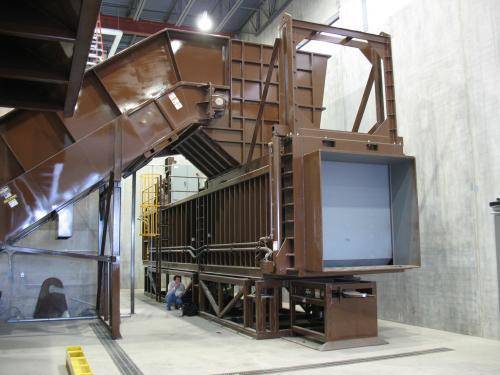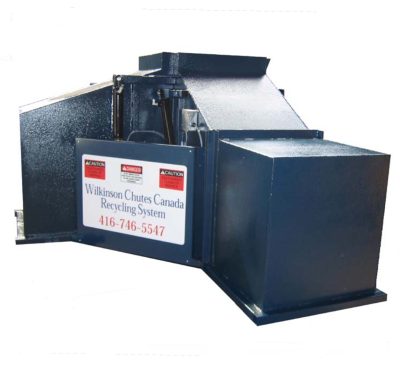Budget Friendly Baler Rental for Services Managing Big Quantities
Budget Friendly Baler Rental for Services Managing Big Quantities
Blog Article
Discovering the Vital Role of Waste Tools in Modern Recycling Processes and Sustainable Garbage Disposal Practices
The essential role of waste equipment in modern-day recycling procedures emphasizes its importance in accomplishing sustainable waste disposal techniques. Advanced systems, such as automated arranging technologies and compactors, not just improve effectiveness yet additionally play a critical function in reducing contamination prices and improving material recovery. As the need for more sustainable services grows, it is important to take a look at just how these technologies adjust to evolving obstacles within waste management. What ingenious improvements are on the horizon that could further change these procedures?
Significance of Waste Equipment
Why is waste devices crucial in the reusing process? The effectiveness of recycling procedures hinges substantially on the schedule and capability of waste devices. This classification of machinery and tools is necessary for the reliable collection, processing, and sorting of recyclable materials. By assisting in the splitting up of materials, waste tools decreases contamination, which is critical in making sure high-grade recyclables that can be reestablished into producing cycles.
Additionally, waste devices enhances operational effectiveness and safety and security within recycling facilities. Advanced equipment, such as shredders and balers, permits the quick processing of big volumes of waste, reducing labor expenses and processing time. On top of that, making use of specialized devices lowers the threat of injury among employees by automating dangerous jobs.
Moreover, the ecological influence of recycling is intensified by efficient waste equipment. By enhancing the reusing procedure, centers can substantially minimize the quantity of waste sent to land fills, thus contributing to sustainability efforts. To conclude, waste devices is not simply a supplementary element of recycling; it is a fundamental element that drives effectiveness, security, and environmental stewardship in modern-day waste administration methods.
Kinds Of Waste Devices
The efficiency of recycling operations is carefully connected to the specific kinds of waste equipment used at the same time. baler rental. Various categories of equipment are integral to the collection, arranging, processing, and transportation of recyclable products
To start with, collection equipment, such as waste collection vehicles and bins, is important for collecting recyclables from numerous sources, including domestic, commercial, and industrial areas. When accumulated, sorting devices, including conveyor belts, shredders, and magnetic separators, plays a critical role in distinguishing various product kinds, ensuring that pollutants are gotten rid of prior to processing.
Handling tools, such as balers and compactors, further prepares materials for recycling by pressing and packaging them right into convenient dimensions. This not just maximizes room yet additionally improves transport effectiveness. In addition, specialized equipment like granulators and extruders is made use of for changing products into reusable forms, particularly in plastic recycling.

Role in Recycling Processes
In reusing procedures, the function of waste devices is crucial in making certain effectiveness and performance at every stage. This equipment includes a variety of equipment created to take care of, process, and kind materials that are to be recycled. The preliminary stage entails collection and transport, where compactors and balers play a critical role in optimizing the volume of materials for transit, therefore minimizing functional prices.
As soon as at the reusing center, shredders and crushers come into play, breaking down materials into workable sizes suitable for further processing. These makers add to boosting baler for rent the surface location of recyclables, facilitating a lot more efficient material recuperation. Arranging systems, outfitted with innovative modern technologies such as conveyor belts and optical sensors, ensure that products are properly divided by type, thereby taking full advantage of the high quality of the recycled end item.
Furthermore, specific equipment for processing specific products-- such as glass, plastics, and steels-- makes sure that each type is handled in one of the most efficient manner. Generally, the combination of advanced waste tools into the recycling procedure not only streamlines procedures yet likewise dramatically adds to the overall recuperation rates of beneficial materials, underscoring its essential duty in contemporary reusing efforts.
Impact on Lasting Practices
Through the reliable procedure of waste equipment, recycling procedures considerably improve lasting techniques across various markets. By simplifying sorting and processing features, progressed waste equipment reduces contamination in recyclable products, consequently enhancing the top quality of recycled output.

Furthermore, the combination of wise technologies in waste administration systems permits for real-time data tracking and evaluation, leading to even more enlightened decision-making and operational performances. As industries significantly prioritize sustainability, the function of waste tools ends up being extremely important in forming practices that line up with ecological stewardship and regulatory compliance. Eventually, the harmony between waste equipment and recycling procedures plays an important function in advancing wider sustainability objectives throughout communities and sectors alike.
Future Trends in Waste Management
Arising fads in waste management are poised to improve the landscape of reusing and resource recovery substantially. Among one of the most critical shifts is the combination of sophisticated innovations such as artificial intelligence, device understanding, and the Net of Things (IoT) These developments help with improved arranging procedures, improving the performance and precision of reusing procedures. Smart waste containers equipped with sensors can check waste levels in real-time, optimizing collection paths and reducing functional prices.
Additionally, the circular economic situation version is getting traction, promoting the concept of reusing products as opposed to disposing of them. This fad motivates organizations to make items with end-of-life considerations in mind, driving the need for cutting-edge waste monitoring options.
Furthermore, public awareness and engagement in sustainability techniques are on the rise, bring about boosted participation in reusing programs. Government policies are additionally developing, with stricter guidelines on waste disposal and motivations for sustainable practices.
As these patterns converge, they develop a more reliable, sustainable waste monitoring system that not only reduces ecological impact however also promotes economic development through source recovery and advancement in waste equipment. The future of waste administration looks promising, driven by modern technology and a commitment to sustainability.
Final Thought
Finally, waste tools plays a pivotal function in enhancing the performance and effectiveness of contemporary reusing procedures. By minimizing contamination and taking full advantage of product recovery, progressed equipment supports lasting waste disposal techniques and promotes a round economy. The unification of wise modern technologies further enhances these initiatives, making sure responsible environmental stewardship. As waste monitoring proceeds to develop, the significance of ingenious waste equipment will certainly stay extremely important in achieving sustainability objectives and attending to the challenges of resource exhaustion.
Report this page